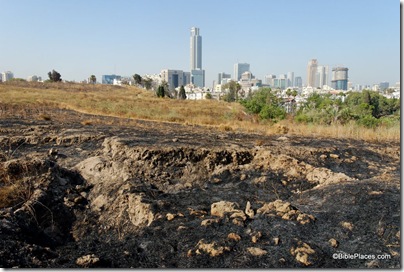How many archaeological sites do you suppose there are in Tel Aviv?
From Haaretz:
The Tel Aviv municipality may soon launch a broad initiative to restore and display archaeological artifacts across the city, deputy-mayor Meital Lehavi told Haaretz.
The plan, to be done in close cooperation with the Antiquities Authority, intends for large local artifacts to be presented in parks, squares and other public areas. The pilot for the program will be launched in 10 parks around the city already located close to archaeological sites.
While the plan has not been finalized and has yet to be confirmed by the municipal administration, Lehavi said a delegation from the municipality will visit the state archaeological storehouses in two months to select exhibits for display.
“When people hear ‘archaeology’ they automatically think of cities like Jerusalem, Megiddo or Akko,” Yossi Levi, the central district archaeologist for the Antiquities Authority said. “But Tel Aviv-Jaffo alone has about 128 archaeological sites, which is a lot. Fifty of them are even visible to the naked eye. As these are sites people travel through anyway, the idea is that they can be turned into public exhibits at a minimal cost.
For more details, see the article in Haaretz.
